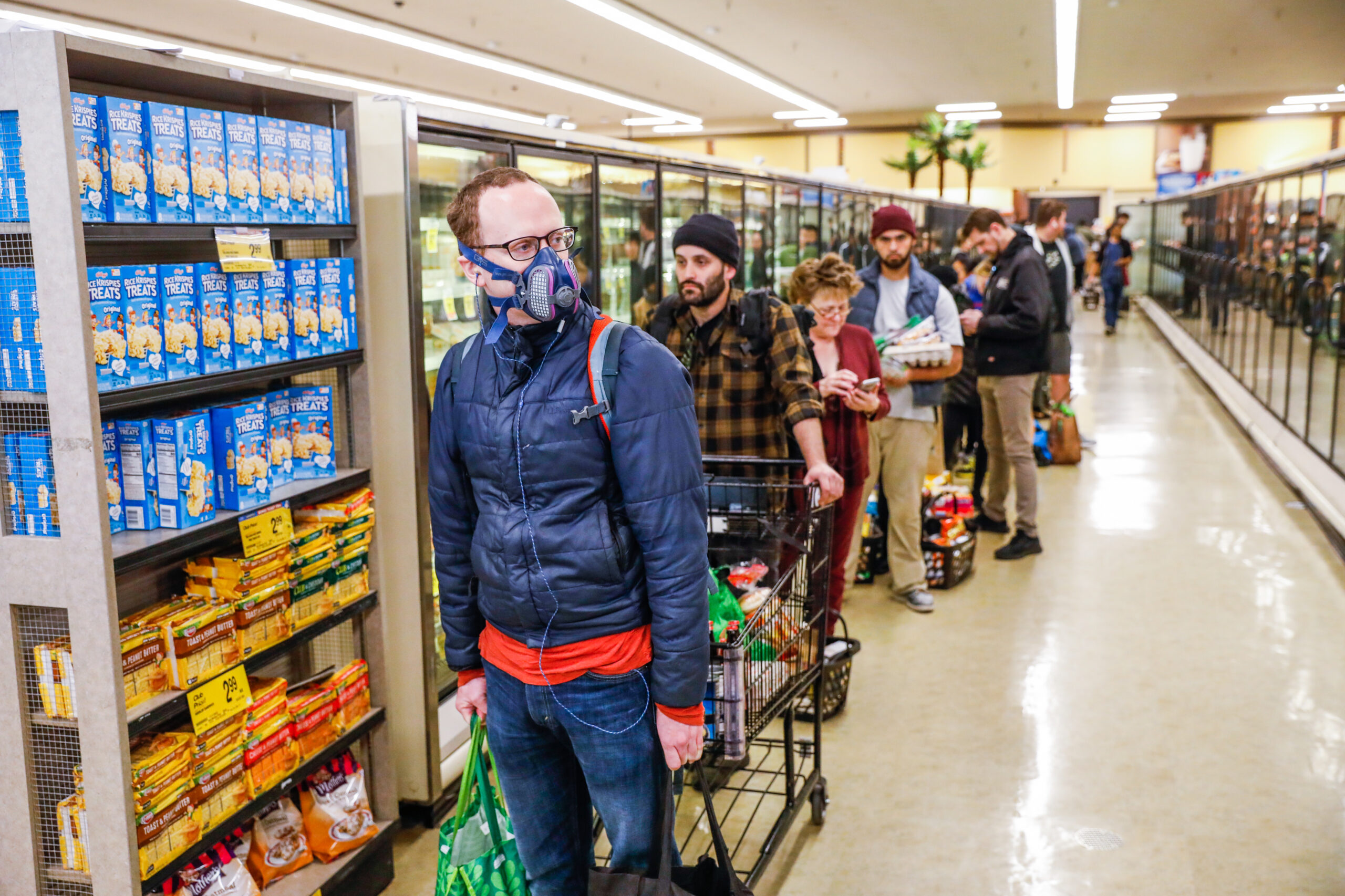Alameda County became the first major jurisdiction in the Bay Area to reinstate its universal mask mandate on Friday as case counts and hospitalizations continue to rise in what’s shaping up to be the fifth wave of the pandemic.
The order came as school districts in Berkeley and Sacramento have decided to bring back their own indoor mask mandates.
Is San Francisco next? Not quite.
A spokesperson for SF’s Department of Public Health said the city’s high vaccination and booster rates have prevented it from reviving a similar mandate. Even so, the spokesperson added, public health experts will keep a close eye on the data and “make adjustments as needed.”
Meanwhile, the city continues to urge people to mask up indoors and in public settings.
Across the bay, Alameda officials cited a dramatic uptick in hospitalizations—35% in the past couple weeks—as a key factor in their decision to bring back required masking.
Alameda County’s mandate includes a carve out for K-12 schools, where required face-coverings have been criticized in some circles as an impediment to student learning and communication.
So, how does San Francisco fare now compared to other points in the pandemic when the city imposed mandatory masking?
New infections have skyrocketed in recent days to their second-highest level since Covid was first reported in the U.S. more than two years ago. And that’s led to a 52% increase in hospitalizations over the past two weeks: As of May 30, SF reported 98 Covid patients hospitalized, with 11 in the ICU.
One of the main reasons public health officials have called for pandemic restrictions in the past has been to prevent hospitals from getting overwhelmed with patients.
On June 18, 2020, when Gov. Gavin Newsom ordered a statewide masking mandate San Francisco saw 28 patients in the hospital with seven in the ICU. However, that was before vaccines were widely available, and when cases and hospitalizations were increasing statewide.
On Aug. 3, 2021, a group of eight Bay Area counties—including San Francisco—reimposed an indoor masking mandate during the Delta wave at a point when the city had 104 patients hospitalized and 34 in the intensive care unit. At that point, around 77% of the city’s residents had been vaccinated.
On Dec. 15, 2021, in the midst of the first Omicron wave, the state again revived its universal masking mandate, but gave fully vaccinated San Franciscans a way out of it in some situations. That day, San Francisco reported 32 Covid patients hospitalized, with 12 in the ICU. Hospitalizations during that wave peaked in late January with 286 total patients hospitalized and 42 in the ICU.
State forecasting models project that daily case counts will decline in the coming weeks, while hospitalizations—which lag case counts—are expected to level off at around 120 Covid patients at the beginning of July. Coronavirus patients in ICUs are expected to continue to grow in number to 26 at the beginning of next month.
Dr. Jeanne Noble, an associate professor of emergency medicine at UCSF who has been a consistent critic of mask mandates, said that trendline leads her to believe a new masking order wouldn’t have a major impact.
“A mask mandate at this point, even if it were to be effective, would not have an impact on lagging hospitalizations,” she predicted. “The reason there is a hospitalization lag is the time it takes for people who are already infected to develop complications that require hospitalization.”
Dr. Peter Chin-Hong, a UCSF infectious disease expert compared the way he thinks about masking to carrying around an umbrella in the event of inclement weather.
“You put it on when you feel it’s risky,” he said, “like if you are indoors in a crowded space with poor ventilation.”
A recent New York Times article explored the utility of mask mandates pointing to evidence that mandates have had only minor impacts on limiting transmission of the disease because of a lack of consistency around masking, coinciding with increasingly infectious versions of the virus.
In a UCSF Grand Rounds interview, Dr. Monica Gandhi, a UCSF infectious disease expert, said even though she’s not convinced about a movement back toward large-scale mask mandate, the evidence is clear that masks do work to limit infection—but only if used correctly.
“I’m thinking of masks as an individual benefit,” Gandhi said. “I don’t see mandates as a big thing coming back, but one-way masking works.”
As long as it’s a good mask, she clarified: Preferably a FFP2, N95, KN95 or KN94.
